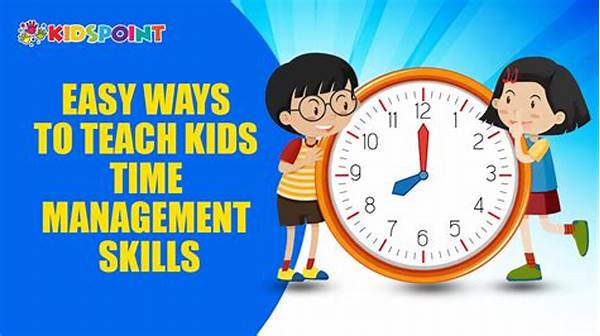How to Teach Kids Time Management
Read More : Expert Approved: The Single Best Time Tracking App For Freelancers To Maximize Billable Hours!
Teaching kids time management is a crucial yet often overlooked aspect of their education. In today’s fast-paced world, learning to manage time effectively can provide children with a significant advantage, not just academically, but also in their personal lives. The ability to organize, prioritize, and balance various tasks can help kids succeed both in school and beyond. By introducing our children to time management early on, we equip them with tools for lifelong learning and productivity. But how do we make this engaging, fun, and most importantly, effective for our young ones?
Successful time management for kids begins with making it relatable and easy to understand. Transforming the concept into an exciting adventure or game can capture their attention. Imagine time being a superhero cape that gives them the power to complete homework, chores, and still have time for their favorite cartoons. It’s all about making the experience positive and rewarding.
To instill effective time management skills, parents can be excellent role models. Demonstrating organized daily routines and using tools like planners or digital calendars can inspire kids to follow suit. Encouragement and praise also play a significant role in reinforcing positive behavior. So, let’s dive into our guide and discover how to teach kids time management in a way that’s both educational and entertaining.
The Art of Prioritization
Helping kids identify what tasks are more important and need immediate attention compared to those that can wait is the cornerstone of time management. This teaches them decision-making skills while also enhancing their ability to focus on the essentials. You could create a fun chart with stickers to reward them every time they prioritize effectively.
—How to Teach Kids Time Management: Comprehensive Description
Many parents wonder about the best ways to instill valuable life skills in their children. One such skill—often underrated but immensely valuable—is time management. Learning this skill at an early age can provide lasting benefits and shape children’s future success in multiple facets of life. This article unfolds how to teach kids time management through engaging methods and compelling reasoning.
Introducing time management as a game can be an excellent entry point for children. Children’s brains, not yet conditioned by the rigid parameters of adult responsibilities, respond well to playful learning. Tools like colorful calendars, checklists, and even smartphone apps designed for children can make the learning process interactive. By making time management a part of a fun daily or weekly challenge, we maintain their interest and foster a competitive spirit.
Another unique selling point is tailoring techniques to fit individual learning styles. Some children may thrive using visual aids like planners and graphics, while others may respond better to auditory cues, such as reminders or schedules read out loud. Recognizing and adapting to these learning preferences makes teaching time management much more effective and personalized.
Benefits of Time Management
Teaching time management doesn’t just organize a child’s day; it has deeper implications. When children manage their time well, they learn the value of time and show increased discipline. These attributes contribute significantly to self-esteem, as children recognize their capability to influence outcomes. This understanding naturally extends into adulthood, shaping responsible and proactive individuals.
Practical Implementation in Daily Life
Amidst a busy family schedule, parents can identify and leverage everyday moments to teach these skills. For instance, setting a routine time for homework and breaking it into manageable chunks helps children understand the segmentation of activities. Making this part of a family “time challenge” where everyone participates in tracking and discussing tasks can make time management a shared, motivating experience.
Continuing with practical implementations, bedtime rituals such as reading stories about famous personalities who excelled through discipline convey the message subtly yet powerfully. This reinforces time management as a concept with remote, tangible benefits, encouraging them to adopt it earnestly.
Moreover, involving technology in teaching time management via digital planners or reminders can captivate tech-savvy kids. Today’s children are more connected than ever, and harnessing this connection can create innovative learning experiences that merge education and technology.
The Role of Schools and Teachers
Schools and teachers also play a crucial role in this process. Integrating lessons on how to teach kids time management into curricula enhances the formal education system. Teachers can incorporate planners, group activities, and projects requiring time-bound completion to reinforce these skills. Thus, kids learn to value cooperation and planning—skills critical in their academic and personal advancement.
Overall, the process of fostering time management in children requires the right mix of guidance, tools, and incentives. Understanding its importance and consistently applying strategies that fit each child can set a strong foundation for their future.
—Key Points on How to Teach Kids Time Management
—Summary of How to Teach Kids Time Management
The journey to teaching kids time management doesn’t have to be arduous. With persistence, creativity, and the right resources, parents and educators can make time management an indispensable skill. Much like learning to ride a bike, it’s something kids may initially wobble through but eventually master and carry with them for life.
How to Teach Kids Time Management Through Creative Engagement
The adventure of teaching time management to children often begins with creativity. It can famously begin in a canvas of doodles—a planner so alive with color it feels like a playground. When children view managing time through creative engagement, they approach it with enthusiasm and attentiveness, harnessing their natural predisposition for exploration and imagination.
Time Management as a Collaborative Journey
Start small, perhaps with a simple daily planner, paired with color-coded stickers or icons representing various tasks. Celebrate each completed task like a mini-victory that merits acknowledgment. Implement role-playing scenarios where kids save the day by organizing time efficiently. By making the experience interactive and collaborative, you ignite the learning fuse that makes the question of how to teach kids time management a rewarding pursuit.
Pushing through the creating of this environment is the tendency of children to mirror adult behaviors. Therefore, exemplify time management skills through leading by example. If they see their mentors balancing tasks diligently, they are likely to emulate such actions, motivated by the visible benefits this brings. Parents, teachers, and peers who prioritize their time exhibit behaviors that children consciously or subconsciously absorb.
Community Support and Technological Tools
Utilizing technology acknowledges the present reality that children are digitally native. Apps, planning software, and even simple web-based timers offer a taste of real-world organizational tools, presented in a kid-friendly manner. Joining online forums with tips on how to teach kids time management broadens the scope to include community support. Here, sharing experiences and gaining insights from others worldwide can present fresh ideas and solutions to common obstacles.
The journey to efficient time management within children is one of exploration, expression, and gentle guidance. Through a thoughtful blend of technology, creativity, and community, imparting the skill of managing time need not be a task but a treasured experience.


